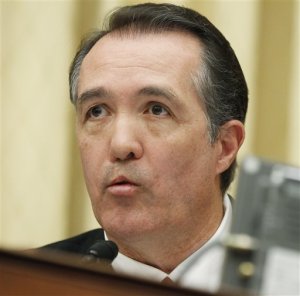EMP protections could get a charge from GOP majority

FRANK TALK ABOUT WAR: “A worst-case EMP scenario is really the ultimate cybersecurity threat.”
By Josh Peterson | Watchdog.org
WASHINGTON – Trent Franks is hoping the new Republican majority in Congress will support his effort to protect the nation’s electric grid against solar flares and nuclear blasts.
Some may consider fear of nuclear warfare a Cold War relic. But Franks, an Arizona congressman, says the threat is still real. He points to such nations as Iran, North Korea and Russia, which recently successfully tested a new intercontinental ballistic missile capable of traveling 8,000 miles and carrying up to 10 nuclear warheads as part of its deterrent program.
But if detonated high in the earth’s atmosphere, it’s the shockwave of the nuclear blast – the electromagnetic pulse, or EMP – that would have the most devastating consequences for the nation’s electrical infrastructure, which is something like the central nervous system in any modern economy.
During the summer, Congress sent a bill to President Obama reauthorizing funding for the intelligence community. But that bill failed to include Frank’s amendment introduced to the Director of National Intelligence to report to Congress about the electromagnetic weapons capabilities of America’s adversaries.
Franks is hopeful that new EMP legislation could be voted on as early as the first week of December. He says he now has the support he needs in the U.S. senate.
“I think that we are very fortunate that Ron Johnson (R-WI) will be the new chair of the Homeland Security Committee in the Senate,” Franks said. “He is someone who is quite aware of the issue.”
Franks is lead sponsor of two bills that would reform the grid’s protection mechanisms: the Critical Infrastructure Protection Act (CIPA), and the Secure High-voltage Infrastructure for Electricity from Lethal Damage (SHIELD) Act.
He says he and Johnson have “had personal discussion about it, and I think that he will be very amenable to CIPA and the SHIELD Act.”
Franks also expressed hope that the White House would see the issue as nonpartisan, and that the president would “listen to his generals.”
“There’s nothing more nonpartisan and even ecumenical than electromagnetic pulse,” said Franks. “Some of the generals in the highest echelons of our military have called EMP a ‘kissing cousin’ to cybersecurity threats because both have the ability to affect the same networks.”
Any chance of reform by way of the SHIELD Act, however, has been stalled for years in the Republican-controlled House Energy & Commerce Committee. In the absence of congressional action, numerous state governments have taken it upon themselves to pass legislation to address vulnerabilities in the electric grid within their borders.
Having both an industry standard and a hardware-based solution – Franks’ proposal would require hardening of the electric grid’s physical components – are important, Franks says.
“Lightning is EMP,” he tells me as an example of how we’ve protected the grid in the past. “It takes down our grid once in a while, but we’ve hardened against it.”
An EMP would have the capacity to indiscriminately disable multiple electronic systems on a mass scale.
“EMP can potentially kill networks entirely,” said Franks, “and with cybersecurity, you have a host of different very serious threats that could mitigate our capability. It’s simply something that we have to be abreast of and wise in how we protect against it.”
“A worst-case EMP scenario is really the ultimate cybersecurity threat,” he said, “because it can essentially take down these networks entirely, and not just within a certain firewalled section of the country.”
Lloyds of London estimated economic damages from an EMP could range between $600 billion – $2.6 trillion. By comparison, the Congressional EMP Commission estimated the cost to taxpayers to protect the grid would be far less – about $2 billion.
And while the military has hardened its systems to protect against the threat of electromagnetic pulses, Franks and other advocates see the civilian grid as still very vulnerable.
“There’s a moment in the life of every potential threat when it is big enough to be seen and still small enough to be preemptively addressed ahead of time,” said Franks.
Follow Josh on Twitter.







